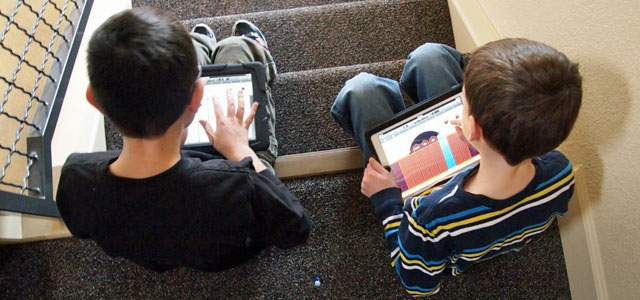Schools across the country are increasingly starting to use mobile devices like tablets and smartphones as classroom tools. But some educators are still skeptical that devices will distract students as much or more than they enhance the learning environment. Because it's still fairly new, there have been few quantitative studies, but Project Tomorrow and Kajeet for Education recently completed a study of mobile learning among 136 fifth graders at Falconer Elementary School, a Chicago public school where 94 percent of students receive free and reduced lunch. The Making Learning Mobile Project study documents how four different fifth-grade teachers and their students used the tablets they were given both in class and at home once the school day was over.
The study finds that students used the tablets for more activities than even they expected. Though only 56 percent of students said they envisioned using the tablet for internet research before the study, that number turned out to be 93 percent after the study was completed. Only six percent of students thought they might use the tablet to create videos, when in fact 39 percent completed video projects. Other common uses included project work, educational games, homework, checking grades, communicating with teachers and classmates, receiving reminders, and organizing schoolwork.
Access to the internet at home improved greatly when students were allowed to bring a device home to investigate topics of their own interest. The Falconer students had significantly less access to high speed internet than a national average of their peers. While 54 percent of students in third-through-fifth grades nationwide report having access to high speed internet, only 39 percent of the fifth-grade Falconer students said they had access. Thirteen percent of students said their only access to the internet was at school.
The one-to-one experiment also appears to have made an impact on how families valued the internet. At the end of the school year, 53 percent of fifth grade Falconer students reported having access to high speed internet, up from 39 percent. “While it was not studied as part of this evaluation, it may be hypothesized that the students’ access to the Internet through their tablets when at home encouraged or prompted their parents to invest in high-speed connectivity to serve the entire family,” the report stated.



